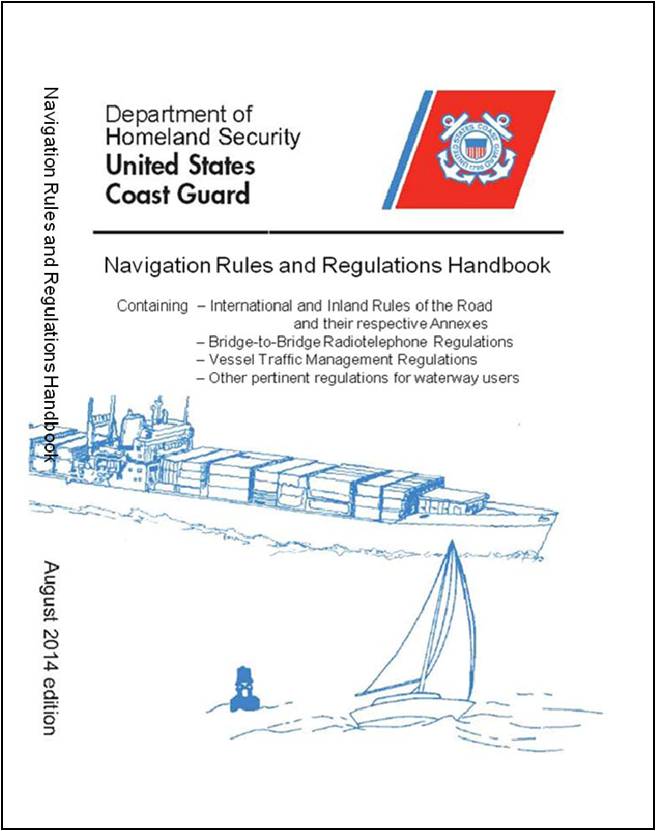Rules of the Road
International Regulations for Prevention of Collisions at Sea, 1972 (72COLREGS) and U.S. Inland Navigation Rules
Navigation Rules are regulations which aid mariners in safe navigation, just as driving laws aid vehicles in safe driving. Charts produced by the National Ocean Service show the COLREGS Demarcation Line, which denotes when mariners should follow the 72 COLREGS (outside the Demarcation lines) or the Inland Navigation Rules (inside the Demarcation Lines). Professional mariners must be proficient in the Rules of the Road but all mariners should know and understand the Rules. The Rules are legally binding and application of them makes the waterways safer for everyone.
The International Rules were formalized in the Convention on the International Regulations for Preventing Collisions at Sea, 1972, and became effective on July 15, 1977. The United States has ratified this treaty and all United States flag vessels must adhere to these Rules. President Ford proclaimed the 72 COLREGS and the Congress adopted them as the International Navigation Rules Act of 1977.
The 72 COLREGS were developed by the Inter-Governmental Maritime Consultative Organization (IMCO), which has since been renamed the International Maritime Organization (IMO). The IMO has adopted 86 amendments to the COLREGS, the most recent of which was in 2014.
As mentioned above, COLREGS are applicable on waters outside of established navigational lines of demarcation. The lines are called COLREGS Demarcation lines and delineate those waters upon which mariners shall comply with the Inland or International Rules. COLREGS Demarcation lines are listed in Title 33 of the Code of Federal Regulations, part 80 (33 CFR 80), and the Navigation Rules and Regulations handbook.
Following the signing of the Convention on the International Regulations for Preventing Collisions at Sea, 1972, a new effort was made to unify and update the various inland navigation rules. This effort culminated in the enactment of the Inland Navigation Rules Act of 1980. This legislation sets out Rules 1 through 38 - the main body of the Rules. Its' five Annexes were published as regulations. It is important to note that with the exception of Annex V to the Inland Rules, the International and Inland Rules and Annexes are very similar in both content and format. The effective date for the Inland Navigation rules was December 24, 1981, except for the Great Lakes where the effective date was March 1, 1983. In 2010 the Coast Guard was given authority to transfer the Inland Navigation Rules from United States Code to Regulations. By so doing, the Coast Guard has the legal authority to effect regulatory changes rather than Congress. The Coast Guard’s federal advisory council for Navigation Rules is the Navigation Safety Advisory Council (NAVSAC), formerly called the Rules of the Road Advisory Committee.
The International Rules are included in the Navigation Rules and Regulations Handbook available on CG Navigation Center’s website. The Handbook supersedes and replaces the COMDTINST M16672.2D Navigation Rules – International and Inland.
Select the cover to navigate the Coast Guard's Navigation Center; click on "Nav Rules" on the top tab to view the Rules page
